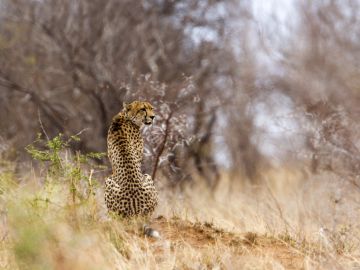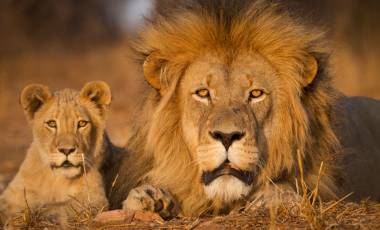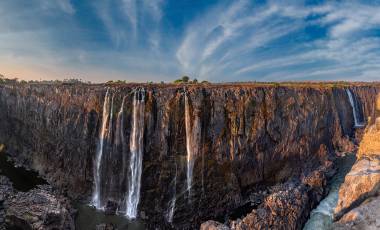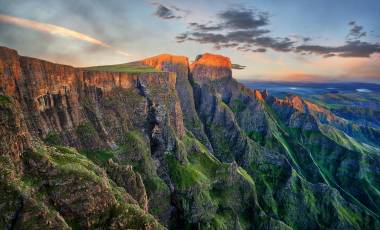This was a jam-packed itinerary, with many walks and other activities, combined with a lot of driving. We moved on every two days, which was necessary to see everything, but it also meant there was no down time. Although this was a wildlife trip, at times the wildlife was rather shy. Some walks we saw very little. We probably saw more wildlife on the boat trips. Our expectations were probably not realistic, but we expected toucans and sloths to be hanging off every branch. It’s not like that (at least in the dry season). We didn’t see a sloth until halfway through the trip when there was one on a tree next to our hotel. Never saw a yellow-billed toucan, although we did see other toucans and toucanets (never knew there was such a thing!). Final count was around 150 different birds, as well as many other creatures (many of which we didn’t know existed). So the wildlife was amazing, but you need to know it doesn’t necessarily just pop out at you. On some walks, especially in Manuel Antonio, there were so many other groups looking at the same thing that it was quite difficult to get in to see things and was quite tiring at times. The walks throughout the trip were also very slow and we understand the pace was to suit looking for wildlife but walking so slowly was difficult and tiring in the heat.

South Africa Safari Holidays
- Home
- South Africa
- Wildlife Holidays in South Africa
South Africa Safari Holidays
South Africa’s Big Five
African Lion: This majestic big cat is arguably the first animal most people imagine when they think of South Africa safari holidays. These social creatures are often found in prides and the females remain in the same pride throughout their lifetime. South Africa is home to a large number of lions and can most often be seen roaming around the Okavango Delta, Masai Mara, Namib Desert, and Etosha, Kruger and Chobe national parks. Kruger National Park boasts the largest number of wild lions, with approximately 2,000 wandering this rich and fertile land in search of prey, that’s almost six lions to every 39 square miles.
Leopard: The most elusive all the animals you might spot on a South Africa safari is the leopard, which is famous for being particularly difficult to track down. These elegant, spotted creatures are solitary in their movements and hunt larger animals such as zebras and antelope. During our South Africa Walking and Wildlife trip, we visit the most advantageous places at Kruger National Park to go in search of the leopard, where you’ll hopefully see them in their natural habitat. They can withstand variable climates and are more often seen lurking in the forest, mountains or deserts.
African Elephant: The largest of the Big Five, the African elephant is a hefty yet graceful animal and can weigh up to an incredible seven tonnes. Kruger National Park is the best place to see elephants on South Africa safari holidays as it is home to the largest population in the world. With over 20,000 elephants roaming the park, you have an excellent chance of seeing them here. The best time to see them at Kruger, is during the country’s dry season when they are thirsty and gather around the waterholes to drink. However, they can also be seen in other parts of the national park throughout the rest of the year.
Rhino: The rhino is another hefty beast that makes up the famous Big Five and is usually spotted plodding around Etosha and Kruger national parks during a South Africa safari. They weigh up to a whopping 7,700 pounds and their horns can grow up to 5ft long, making them the second largest land mammal after the elephant. Witnessing a herd of rhinos thundering across the wilderness is an incredible experience and they can reach speeds of up to 30-40mph, so make sure you don’t get in their way!
African Buffalo: Sometimes mistaken for bulls, the buffalo is considered one of the most dangerous of the Big Five as they have a habit of attacking. On our South Africa holidays safari drives through Etosha, Chobe and Kruger national parks, let you get up close to the African buffalo. You can also see them at the Okavango Delta and it’s a truly humbling experience to watch their behaviour in the wild. The African buffalo tends to live in groups and they mostly eat grass and leaves.
Kurt Mills Discover Costa Rica
Douglas Parker Discover Costa RicaMy perspective is that of a fit and active gent in his early 70’s. Also, this is my first trip with Exodus. As another reviewer has noted, “Discover Costa Rica” is almost exclusively a nature trip. The itinerary touches only slightly on the peoples, history and culture of Costa Rica. This is also an active trip! You’re on the move every second day: bags packed and ready for loading by 7:00 AM with 8:00 AM departure. There’s not much downtime throughout this two-week trip.
It struck me that on a nature trip like this, the wildlife needs to “get the memo” that we’re coming. The wildlife needs to show up! Seriously, the forces of climate/climate change, local weather, and seasonality can come together in a way that limits the opportunity for wildlife viewing. Such was my experience. Several of the nature walks yielded very little in terms of wildlife viewing. In no way do I fault our group leader. He was VERY knowledgeable. I can’t imagine anyone trying harder to find wildlife for our tour group to view. So . . . enjoy the walk in the tropics and any wildlife you see is a bonus might be a good mindset.
Most of the wildlife I saw was birds. It seems silly almost to state the obvious. Birds are actually quite small as compared with other wildlife, say, an elephant you might spot on a trip to Africa! A bird can come into view, alight on a branch, and then, within a few seconds, disappear into the lush vegetation. There’s limited opportunity to observe the creature and perhaps take a few photos. I wish I’d considered this more before embarkation!
Accommodation was perfectly serviceable, clean rooms and well maintained. This is not luxe accommodation but it’s not spartan either. It was perfectly in line with the amount I paid to take the tour. The food was varied and tasty. Lots of it!In my opinion, Discover Costa Rica is a good trip that could be great if the itinerary was tweaked a bit. For openers, I would get rid of one two-night stop (suggest Monteverde as we saw almost nothing) and create two other three-night stops. This would allow for a little downtime. I would also add some trip experiences such as the farm visit on the final day. These added experiences might focus on the people, history, and culture of Costa Rica. This way, if the wildlife “doesn’t get the memo”, there are still some high-quality experiences that the traveler will cherish.
Michelle Burton Discover Costa RicaGreat way to see a lot of Costa Rica with the huge benefit of a private vehicle and guide. All accommodation was a high standard as well as good and ample food in all hotels.
The Adventure Begins Here
Get regular inspiration straight to your inbox from Exodus' experts.


